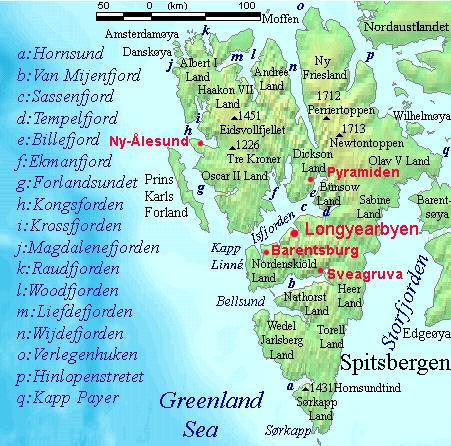|
Wilhelm Hisinger
Wilhelm Hisinger (23 December 1766 – 28 June 1852) was a Swedish physicist and chemist who in 1807, working in coordination with Jöns Jakob Berzelius, noted that in electrolysis any given substance always went to the same pole, and that substances attracted to the same pole had other properties in common. This showed that there was at least a qualitative correlation between the chemical and electrical natures of bodies. Career In 1803, in separate laboratories, Martin Heinrich Klaproth in one, and Berzelius and Hisinger in another, the element Cerium was discovered, which was named after the newly discovered asteroid, Ceres. It was discovered nearly simultaneously by both laboratories, though it was later shown that Berzelius and Hisinger's cerium was actually a mixture of cerium, lanthanum and so-called didymium. The element was first isolated by Carl Gustaf Mosander in 1838. Hisinger was elected a member of the Royal Swedish Academy of Sciences in 1804. Death and legacy ... [...More Info...] [...Related Items...] OR: [Wikipedia] [Google] [Baidu] |
Nordisk Familjebok
''Nordisk familjebok'' (, "Nordic Family Book") is a Swedish encyclopedia that was published in print from between 1876 and 1993, and that is now fully available in digital form via Project Runeberg at Linköping University. Despite their considerable age and relative obsolescence, the public domain editions of the encyclopedia remain important reference works in Finland, especially on Finnish Wikipedia. History First edition ''Nordisk familjebok'' began when Halmstad publisher hired an editor, linguist , in 1874 to publish a six-volume encyclopedia. Linder drew up a plan for the work, designed the editorial team and created a large circle of experts and literary figures, who submitted article proposals and wrote and reviewed them. Under Linder's direction, the articles were then edited to make them as formal, consistent and accurate as possible. Much attention was paid to Nordic subjects, mainly Swedish and Finnish, where sources and models were often lacking, so extensive ... [...More Info...] [...Related Items...] OR: [Wikipedia] [Google] [Baidu] |
Didymium
Didymium ( el, , twin) is a mixture of the elements praseodymium and neodymium. It is used in safety glasses for glassblowing and blacksmithing, especially with a gas (propane)-powered forge, where it provides a filter that selectively blocks the yellowish light at 589 nm emitted by the hot sodium in the glass without having a detrimental effect on general vision, unlike dark welder's glasses. The usefulness of didymium glass for eye protection of this sort was discovered by Sir William Crookes. Didymium photographic filters are often used to enhance autumn scenery by making leaves appear more vibrant. It does this by removing part of the orange region of the color spectrum, acting as an optical band-stop filter. Unfiltered, this group of colors tends to make certain elements of a picture appear "muddy". These photographic filters are also used by nightscape photographers, as they absorb part of the light pollution caused by sodium street lights. Didymium was also used in ... [...More Info...] [...Related Items...] OR: [Wikipedia] [Google] [Baidu] |
Svenskt Biografiskt Handlexikon
''Svenskt biografiskt handlexikon'' () is a compact Swedish dictionary of biography first published in 1873–1876 by the physician and antiquarian Herman Hofberg (1823–1883). The second, updated edition was published in 1906, under the editorship of Frithiof Heurlin, Viktor Millqvist, and Olof Rubenson. The second edition, two volumes of all together 1,445 pages, contains 4,419 articles on families and individuals, "renowned Swedish men and women from the reformation until the present times", and more than 3,000 miniature portraits. See also * Svenskt biografiskt lexikon External links *Svenskt biografiskt handlexikon', digitized facsimile, at the Project Runeberg Project Runeberg ( sv, Projekt Runeberg) is a digital cultural archive initiative that publishes free electronic versions of books significant to the culture and history of the Nordic countries. Patterned after Project Gutenberg, it was founded ... website 1873 non-fiction books 1874 non-fiction books 1875 ... [...More Info...] [...Related Items...] OR: [Wikipedia] [Google] [Baidu] |
Bastnäs
Bastnäs ( sv, Bastnäs or ) is an ore field near Riddarhyttan, Västmanland, Sweden. The mines in Bastnäs were earliest mentioned in 1692. Iron, copper and rare-earth elements were extracted from the mines and 4,500 tons of cerium was produced between 1875 and 1888. The chemical element cerium was first discovered in Bastnäs in 1803 by Jöns Jakob Berzelius and Wilhelm Hisinger in the form of its oxide, ceria, and independently in Germany by Martin Heinrich Klaproth. Lanthanum was also first discovered in minerals from Bastnäs in 1839 by Carl Gustav Mosander. The mineral bastnäsite The mineral bastnäsite (or bastnaesite) is one of a family of three carbonate-fluoride minerals, which includes bastnäsite-( Ce) with a formula of (Ce, La)CO3F, bastnäsite-( La) with a formula of (La, Ce)CO3F, and bastnäsite-( Y) with a formul ... is named after Bastnäs. Gallery File:Bastnas maskinhus.jpg, Transmission house at Bastnäs mines File:Bastnas hakspel.jpg, Mechanism for hauling o ... [...More Info...] [...Related Items...] OR: [Wikipedia] [Google] [Baidu] |
Norwegian Polar Institute
The Norwegian Polar Institute (NPI; no, Norsk Polarinstitutt) is Norway's central governmental institution for scientific research, mapping and environmental monitoring in the Arctic and the Antarctic. The NPI is a directorate under Norway's Ministry of Climate and Environment. The institute advises Norwegian authorities on matters concerning polar environmental management and is the official environmental management body for Norwegian activities in Antarctica. Activities The institute's activities are focused on environmental research and management in the polar regions. The NPI's researchers investigate biodiversity, climate and environmental toxins in the Arctic and Antarctic, and in this context the institute equips and organizes large-scale expeditions to both polar regions. The institute contributes to national and international climate work, and is an active contact point for the international scientific community. The institute collects and analyses data on the environm ... [...More Info...] [...Related Items...] OR: [Wikipedia] [Google] [Baidu] |
Svalbard
Svalbard ( , ), also known as Spitsbergen, or Spitzbergen, is a Norwegian archipelago in the Arctic Ocean. North of mainland Europe, it is about midway between the northern coast of Norway and the North Pole. The islands of the group range from 74° to 81° north latitude, and from 10° to 35° east longitude. The largest island is Spitsbergen, followed by Nordaustlandet and . The largest settlement is Longyearbyen. The islands were first used as a base by the whalers who sailed far north in the 17th and 18th centuries, after which they were abandoned. Coal mining started at the beginning of the 20th century, and several permanent communities were established. The Svalbard Treaty of 1920 recognizes Norwegian sovereignty, and the 1925 Svalbard Act made Svalbard a full part of the Kingdom of Norway. They also established Svalbard as a free economic zone and a demilitarized zone. The Norwegian Store Norske and the Russian remain the only mining companies in place. Res ... [...More Info...] [...Related Items...] OR: [Wikipedia] [Google] [Baidu] |
Spitsbergen
Spitsbergen (; formerly known as West Spitsbergen; Norwegian: ''Vest Spitsbergen'' or ''Vestspitsbergen'' , also sometimes spelled Spitzbergen) is the largest and the only permanently populated island of the Svalbard archipelago in northern Norway. Constituting the westernmost bulk of the archipelago, it borders the Arctic Ocean, the Norwegian Sea, and the Greenland Sea. Spitsbergen covers an area of , making it the largest island in Norway and the 36th-largest in the world. The administrative centre is Longyearbyen. Other settlements, in addition to research outposts, are the Russian mining community of Barentsburg, the research community of Ny-Ålesund, and the mining outpost of Sveagruva. Spitsbergen was covered in of ice in 1999, which was approximately 58.5% of the island's total area. The island was first used as a whaling base in the 17th and 18th centuries, after which it was abandoned. Coal mining started at the end of the 19th century, and several permanent commun ... [...More Info...] [...Related Items...] OR: [Wikipedia] [Google] [Baidu] |
Nathorst Land
Nathorst Land is the land area between Van Keulenfjorden and Van Mijenfjorden on Spitsbergen, Svalbard. The area is named after Alfred Gabriel Nathorst Alfred Gabriel Nathorst (7 November 1850 – 20 January 1921) was a Swedish Arctic explorer, geologist, and palaeobotanist. Life He was born in Väderbrunn in Sweden. Nathorst's interest in geology was awoken by Charles Lyell’s ‘’Prin .... The Aspelintoppen mountain is the highest peak in Nathorst Land. References Peninsulas of Spitsbergen {{Spitsbergen-geo-stub ... [...More Info...] [...Related Items...] OR: [Wikipedia] [Google] [Baidu] |
Hisingerfjellet
Hisingerfjellet is a mountain in Nathorst Land at Spitsbergen, Svalbard. It has two peaks with heights of 1,078 and 1.044 m.a.s.l., respectively. The mountain is located between Krylbreen, Krylen, Breskarvet and Bromelldalen, at the southern side of Van Mijenfjorden. It is named after Swedish geologist Wilhelm Hisinger Wilhelm Hisinger (23 December 1766 – 28 June 1852) was a Swedish physicist and chemist who in 1807, working in coordination with Jöns Jakob Berzelius, noted that in electrolysis any given substance always went to the same pole, and that substanc .... References Mountains of Spitsbergen {{Spitsbergen-mountain-stub ... [...More Info...] [...Related Items...] OR: [Wikipedia] [Google] [Baidu] |
Aluminian Hisingerite
Hisingerite is an iron(III) phyllosilicate mineral with formula . A black or dark brown, lustrous secondary mineral, it is formed by the weathering or hydrothermal alteration of other iron silicate and sulfide minerals. It was first described in 1751 by A.F. Cronstedt from Väster Silvberg, Dalarna, Sweden (under the name “kolspeglande järnmalm”), and in 1810 by W. Hisinger from the Gillinge iron mine, Södermanland, Sweden (“svart stenart”, later “gillingit”). In 1828 it was found at an occurrence in Riddarhyttan, Vastmanland, Sweden. It was named after Wilhelm Hisinger (1766–1852), a Swedish chemist. There are also ''aluminian hisingerite'' variety in which one of the iron atoms is replaced by aluminium and chrome-alumina-hisingerite variety in which chromium Chromium is a chemical element with the symbol Cr and atomic number 24. It is the first element in group 6. It is a steely-grey, lustrous, hard, and brittle transition metal. Chromium metal is valued f ... [...More Info...] [...Related Items...] OR: [Wikipedia] [Google] [Baidu] |
Iron Silicate
Fayalite (, commonly abbreviated to Fa) is the iron-rich end-member of the olivine solid-solution series. In common with all minerals in the olivine group, fayalite crystallizes in the orthorhombic system (space group ''Pbnm'') with cell parameters ''a'' 4.82 Å, ''b'' 10.48 Å and ''c'' 6.09 Å. Fayalite forms solid solution series with the magnesium olivine endmember forsterite (Mg2SiO4) and also with the manganese rich olivine endmember tephroite (Mn2SiO4). Iron rich olivine is a relatively common constituent of acidic and alkaline igneous rocks such as volcanic obsidians, rhyolites, trachytes and phonolites and plutonic quartz syenites where it is associated with amphiboles. Its main occurrence is in ultramafic volcanic and plutonic rocks and less commonly in felsic plutonic rocks and rarely in granite pegmatite. It also occurs in lithophysae in obsidian. It also occurs in medium-grade thermally metamorphosed iron-rich sediments and in impure carbonate rocks. ... [...More Info...] [...Related Items...] OR: [Wikipedia] [Google] [Baidu] |
Hisingerite
Hisingerite is an iron(III) phyllosilicate mineral with formula . A black or dark brown, lustrous secondary mineral, it is formed by the weathering or hydrothermal alteration of other iron silicate and sulfide minerals. It was first described in 1751 by A.F. Cronstedt from Väster Silvberg, Dalarna, Sweden (under the name “kolspeglande järnmalm”), and in 1810 by W. Hisinger from the Gillinge iron mine, Södermanland, Sweden (“svart stenart”, later “gillingit”). In 1828 it was found at an occurrence in Riddarhyttan, Vastmanland, Sweden. It was named after Wilhelm Hisinger (1766–1852), a Swedish chemist. There are also ''aluminian hisingerite'' variety in which one of the iron atoms is replaced by aluminium and chrome-alumina-hisingerite variety in which chromium Chromium is a chemical element with the symbol Cr and atomic number 24. It is the first element in group 6. It is a steely-grey, lustrous, hard, and brittle transition metal. Chromium metal is ... [...More Info...] [...Related Items...] OR: [Wikipedia] [Google] [Baidu] |






